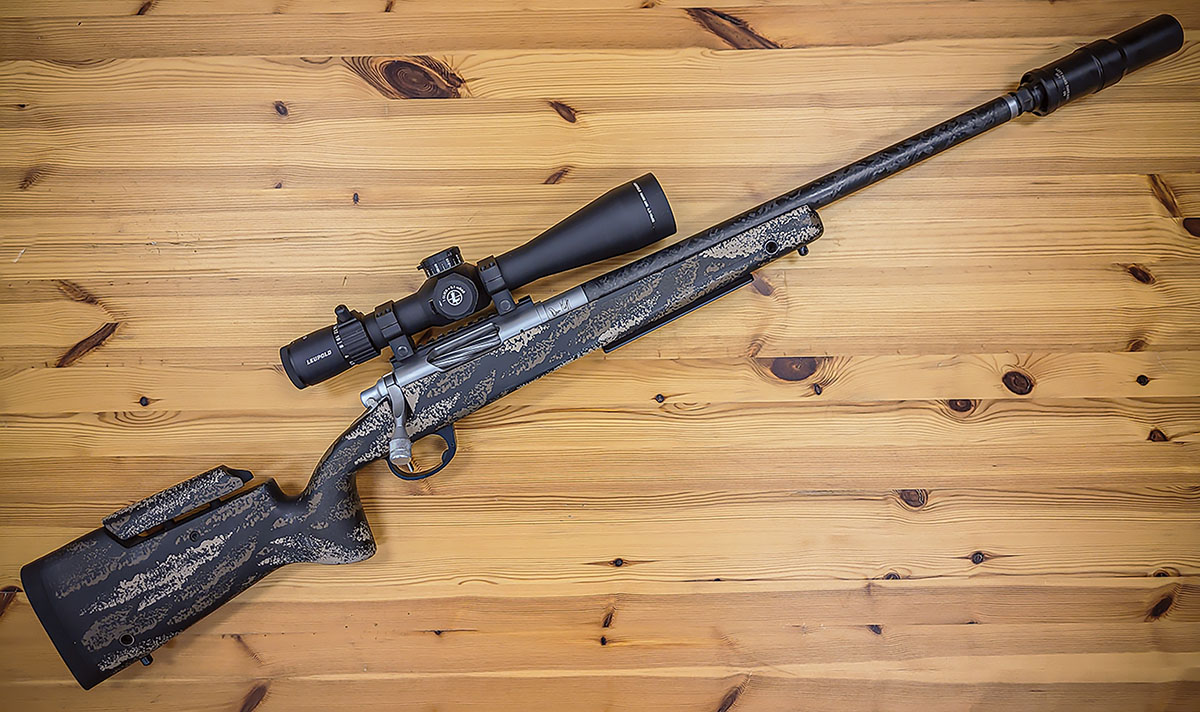
As a whole, this rifle has many great features, and they all work together in harmony to create an extremely pleasant experience for the shooter, from the range to the field.
In the last issue of
Handloader No. 351 (August – September 2024), we discussed the history and introduction of the 22 ARC. In addition, we also tested some initial loads and experimented with some powders and bullets previously untested by independent sources. The results were certainly impressive, and the rifle, built by Dave Kiff, was equally impressive. Out of all the loads tested, not a single load broke over 1.66 inches, with many loads printing sub-MOA shooting five-shot groups.
There has been much talk on the internet about how relevant five-shot groups are and statistically speaking, they are not very relevant. However, I do think there is still value in them for several reasons. Yet, these reasons may not be what you think. Personally speaking, a single five-shot group doesn’t seem to have much bearing when it comes to testing the accuracy or precision of a given load. However, for someone seeking to work up a load using a particular bullet or powder combination, I think there is a lot of relevance at that point, especially if you are shooting multiple groups with the same powder and bullet combination. In my experience, these are the two most significant factors that will affect the accuracy of a given load.
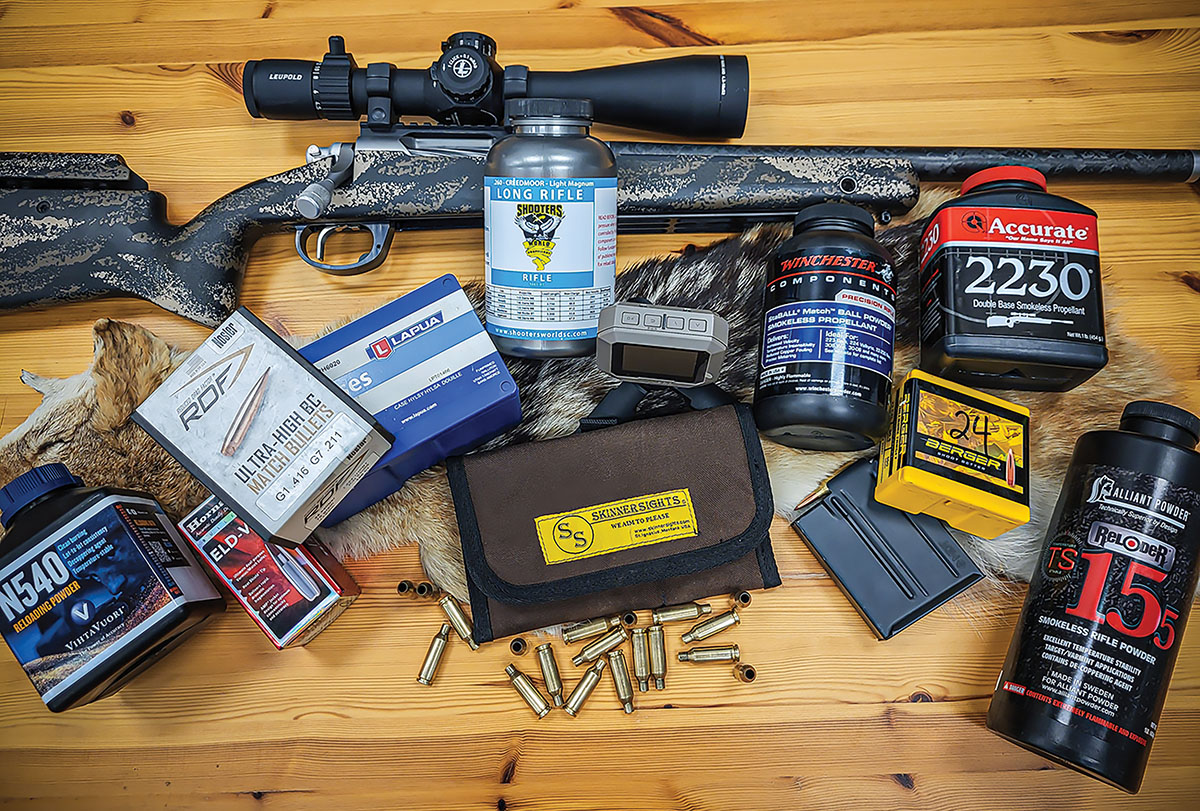
Rather than reshoot the same data used in Part I of this article, Jeremiah decided to develop new loads with different powder and bullet combinations. This is a new cartridge and there are still a lot of powders that have yet to be tested.
Some savvy readers may have caught on to some of my load development methods after perusing my load tables from past issues. I generally shoot one powder and one bullet with five different charge weights for a total of 25 shots with a particular powder and bullet combination. While this is not the only way I will conduct load development, it is preferred for use in the magazine for multiple reasons. Five shots are enough to establish a rough baseline for accuracy and velocity. The Sporting Arms & Ammunition Manufacturers Institute (SAAMI) uses 10 shots to determine pressure averages, which is certainly better than five shots. Yet, this doesn’t mean five-shot groups are meaningless. It can be quite useful for checking to see if a particular powder or bullet combination will perform well enough to warrant further testing. It also means that fewer components can be used to develop load data. Based on the extreme spreads and standard deviations, you can at least get a rough idea of how consistent a particular powder or bullet may perform if you have good extreme spreads and standard deviations across five loads, with five shots for each load. You can expect that powder to perform fairly well in that cartridge. The same could be said about group size. If you have a powder and bullet that shows good accuracy for five groups of five shots, then you have 25 rounds that grouped well with that powder and bullet combination. You still have to take into consideration that the different charge weights are a variable. However, you can use this information to make educated decisions for testing future loads.
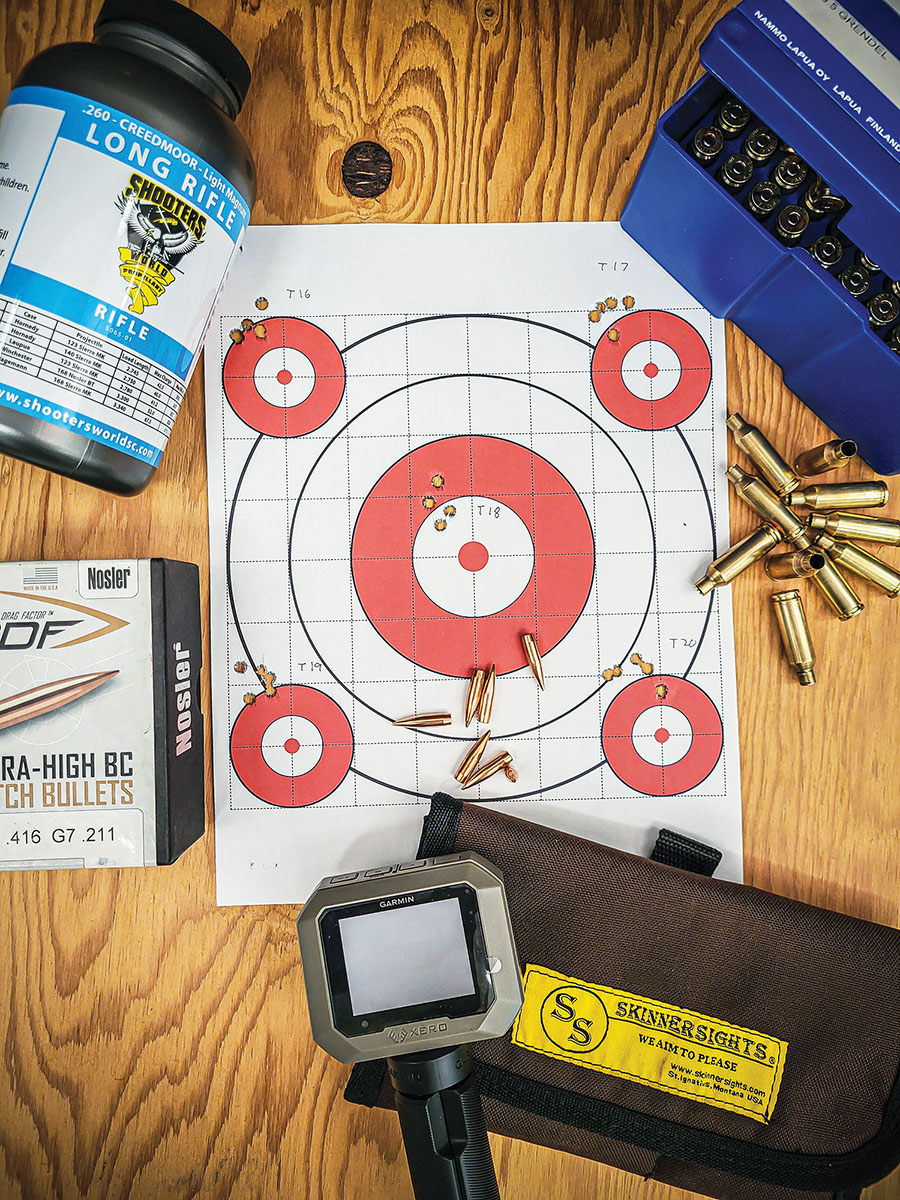
Rather than reshoot the same data used in Part I of this article, Jeremiah decided to develop new loads with different powder and bullet combinations. This is a new cartridge and there are still a lot of powders that have yet to be tested.
It was with these thoughts in mind that I began testing for Part II of this article. To keep things as consistent as possible, the same setup from the press to the powder dispenser/scale was used to develop these loads. The details of this setup can be found in the load tables in this article. The loads were tested under conditions as close as possible to previous tests, but sadly, Mother Nature does not always cooperate and it is a variable that must always be considered when testing.
To start, what appeared to be the best bullet and powder combination from a numbers and group size perspective was selected from Part I of this article. Mostly for my own satisfaction and curiosity, 30 rounds were carefully loaded using the same dies and settings that were previously used. These 30 rounds were then fired on paper in 10-shot strings, allowing the barrel to cool completely with the aid of a modified tube and air mattress pump. The results of this test were impressive, to say the least (see accompanying photo). The group measured out to .88 inch with a mean radius of .21 inch, the group was also nice and round at .86-inch wide and .81-inch tall. Generally speaking, when shooting statistically significant sample sizes for precision testing, the group shape will be somewhat round.
There is no doubt this rifle is capable of outstanding accuracy. If you have not attempted to shoot a 30-shot group with your favorite rifle and load combination, I would encourage you to do so. The results may just surprise you and what you once thought was a sub-MOA rifle or load may prove to break that rather mythical mark. After printing your 30-shot group, this is a great time to zero the rifle to that load. Something, in retrospect, I should have done prior to developing more loads!
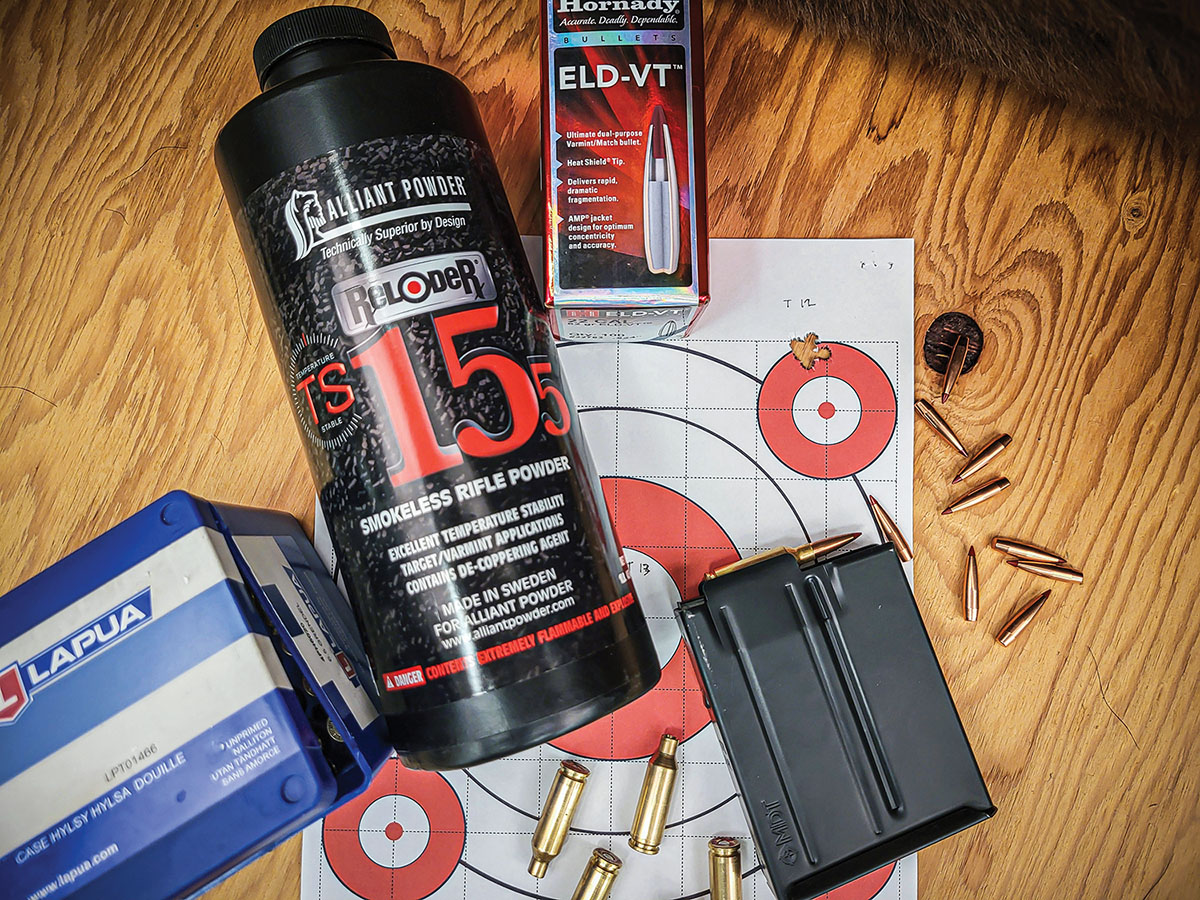
Alliant Reloder 15.5 TS powder was recommended by Wolfe Publishing Contributing Editor Patrick Meitin, and it did not disappoint. It produced this .32 inch, five-shot group at 100 yards.
The final step of this project was to develop a few more loads with this rifle and see if the fireformed cases would make a difference in accuracy. Since the cases used for the previous test were virgin, 6.5 Grendel cases formed to 22 ARC, I wanted to determine just how much of a difference this may have made in testing. However, rather than reload and reshoot the same loads from part one of this article, I decided to take this opportunity to develop more load data with different bullets and different powders, especially since this is a rather new cartridge and there is a wide range of powders that should be suitable. Once again, I was back to shooting five-shot groups, attempting to expand the amount of handloading data available for this cartridge.
As can be seen in the accompanying load table, the rifle once again performed very well across a wide range of powders, bullets and charge weights. Looking at the table as a whole and comparing it to the table in Part I may leave us with more questions than answers. In this round of testing, not a single load broke the 1-MOA mark, while some came very close at .99 inch. The overall average group size across all 24 loads was .71 inch. Comparing that to the table in part one, across all 37 loads, the average group size was .61 inch. This certainly isn’t an apples-to-apples comparison, given that the amount of loads tested was different and that the powder and bullet combinations were also completely different. Do with that information as you will. I found it quite fascinating, with a difference of just .1 inch, which could be within the statistical noise variance from powder/bullet combinations or good old-fashioned shooter error. Seeing how close these figures were to the 30-shot group was surprising. If nothing else, this rifle is very consistent, and it no doubt meets the criteria for its job of being a 500-yard-and-in coyote rifle.
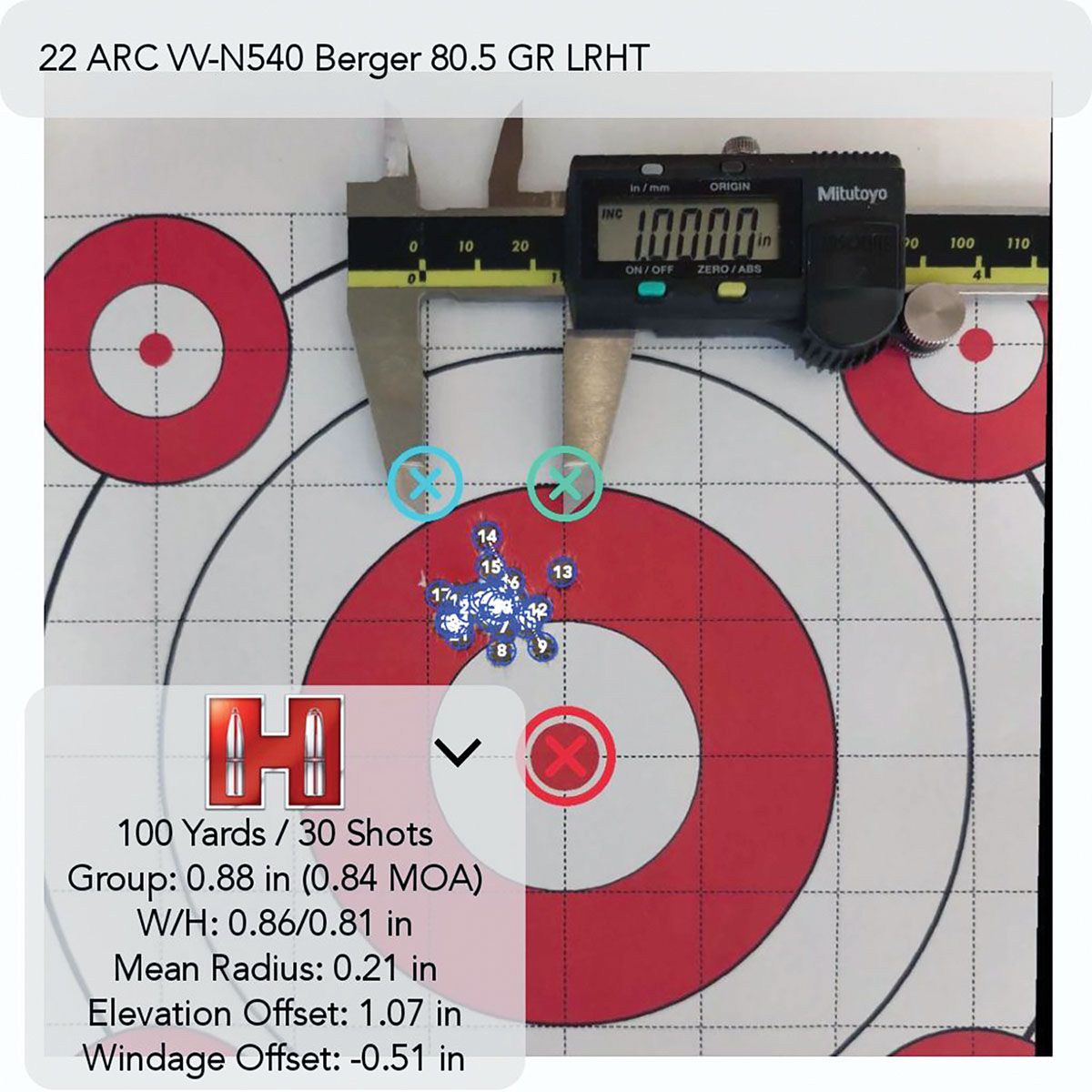
This 30-shot group was measured using the Group Analysis tool within the Hornady App. The group size was verified with a Mitutoyo caliper as well. With a good load, this rifle is truly capable of consistent, repeatable sub-MOA performance.
I want to close this article with some notes on the rifle itself, which has proved itself for its intended purpose, along with an impressive resume of suitable bullets and powders. The rifle itself has been a pure pleasure and a joy to shoot and use in the field. At the time of this writing, five coyotes have been successfully sent to the “den in the sky” thanks to this rifle. It weighs in at 8.5 pounds with optic if you add the Nosler SR-30k suppressor, it is just under 9 pounds. The 20-inch Proof Research Barrel makes it handy and more than accurate for its intended purpose. The 1:7 twist makes it capable of stabilizing the heaviest in class .22-caliber bullets, taking full advantage of wind-bucking ballistic coefficients and energy delivered on target. The
AG Composites Adjustable Hunter stock feels fantastic and rides the bags nicely, but it also lends itself well to field-style shooting. The built-in ARCA rail is fantastic for setting up on a tripod, which can be a huge advantage in competition or when calling coyotes. It comes naturally to the shoulder and despite its more modern look and feel it still points well offhand. Proof of this was a recent coyote that was taken at 200 yards from the kneeling position. The rifle was shouldered and the coyote was in the crosshairs, steady as can be from a kneeling position. A single 62-grain
ELD-VT bullet dropped the coyote in its tracks.
The rifle features a Timney Triggers Elite Hunter, which broke clean and crisp, with no creep or overtravel, at 1 pound, 13 ounces. The QD sockets are in good locations for slinging the rifle, which is especially handy on horseback. If a more traditional sling setup is desired, there are still standard sling swivels fore and aft. This also means that I can still mount my trusty Harris bipod on the rifle if so desired.
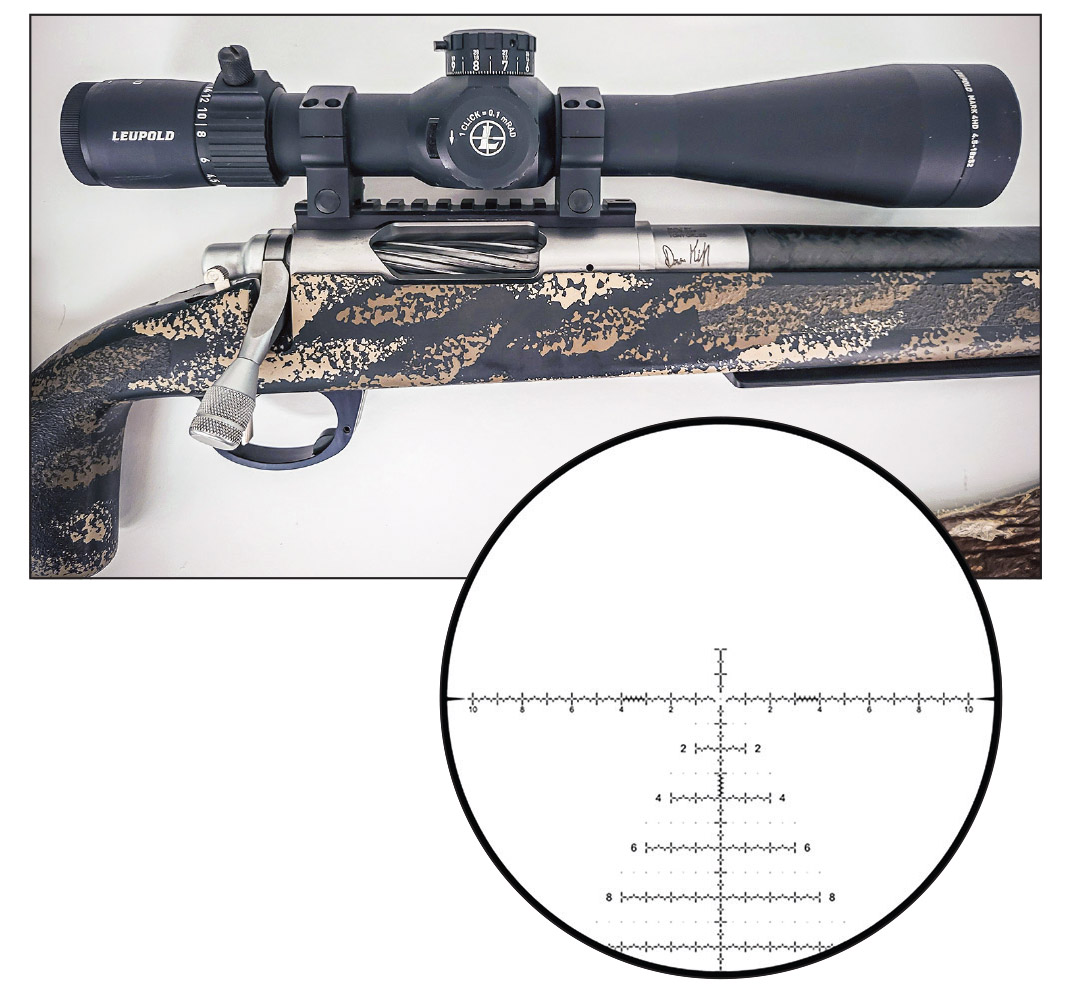
The optic used throughout testing was a Leupold Mark 4HD 4.5-18x 52mm riflescope that features a 34mm main tube and the Leupold PR2-MIL FFP reticle. It proved to be rugged and reliable, the turrets tracked perfectly and the reticle provided ample holdovers for wind and elevation while not being overly busy.
The
Leupold Mark 4 greatly impressed me with the quality and features, given its current price point, I am amazed at the features it boasts of. In my mind, it is an ideal optic for competition and hunting. In conducting tall target tests and dialing for longer shots at steel and coyotes, the scope tracks flawlessly, even after a bumpy ride in the truck or on horseback. It gathers light exceptionally well thanks to the 34mm main tube. This was made apparent one night while calling coyotes in the Arizona high desert. Without the aid of artificial light, I was able to see reasonably well out to 100 to 200 yards on the optics’ lowest magnification setting.
All in all, this rifle has many features and qualities that blend together and work in harmony. Needless to say, Dave Kiff from Pacific Tool & Gauge, built a fantastic rifle and Hornady designed a fantastic cartridge. The combination has proved to be not only deadly but has quickly turned into my favorite coyote rig. While the article may end here, I know there will be many more adventures and memorable hunts with this rifle and the loads developed for this story.
If you would like to watch the accompanying video to this article, check out the video titled “Handloading and Testing the 22 ARC” on our YouTube channel Handloader TV.






.jpg)
.jpg)


